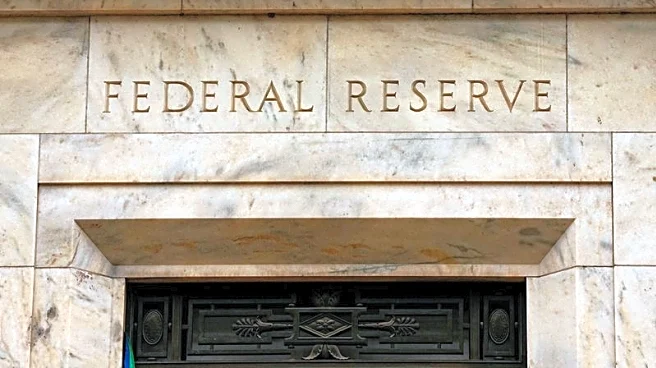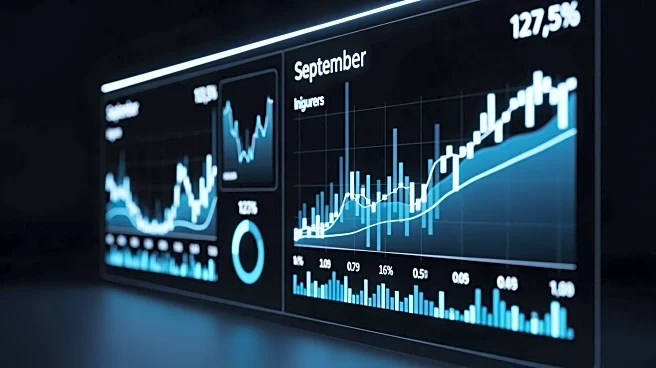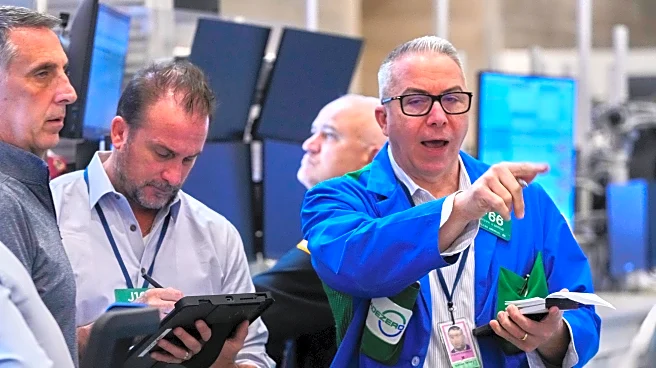What's Happening?
The Federal Reserve is preparing to make a decision on interest rates this Wednesday, following a report from the Labor Department indicating that the U.S. inflation rate rose to 3% in September. This
figure is lower than expected, suggesting that the impact of President Trump's tariffs has been less severe than anticipated. Economists believe this softer inflation report could lead to a rate cut by the Federal Reserve. The probability of a 0.25 percentage point cut is currently at 96.7%, which would lower the benchmark rate to a range of 3.75% to 4%. This would be the second rate cut by the Fed this year, following concerns about a slowdown in the labor market.
Why It's Important?
A potential rate cut by the Federal Reserve could have significant implications for the U.S. economy. Lower interest rates generally make borrowing cheaper, which can stimulate economic activity by encouraging consumer spending and business investments. This is particularly important in a context where the labor market is showing signs of weakness. A reduction in rates could also lead to lower costs for credit products like credit cards and home equity lines of credit, potentially easing financial burdens on consumers. However, the impact on mortgage rates may be limited, as these are influenced by broader economic expectations.
What's Next?
If the Federal Reserve proceeds with the rate cut, it is expected to further reduce rates in December, potentially lowering the benchmark rate by a total of 0.75 percentage points by the end of the year. This could continue to influence borrowing costs and economic activity. Stakeholders, including businesses and consumers, will be closely monitoring the Fed's decisions and any subsequent economic indicators to gauge the broader impact on the economy.













